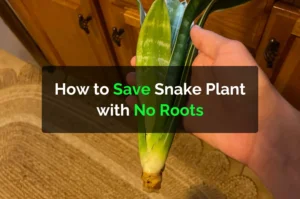Snake plants (also known as Sansevieria or mother-in-law’s tongue) are popular houseplants known for their hardy nature and stylish appearance. While these plants are low-maintenance, they can still become infested with pests like spider mites, aphids, or mealybugs. One commonly recommended natural treatment is insecticidal soap, but is the homemade version safe for your snake plant?
This article explores the safety, effectiveness, and best practices for using homemade insecticidal soap on snake plants.
What Is Insecticidal Soap?
Insecticidal soap is a pest control solution made from the fatty acids in natural soaps. It works by breaking down the protective coating of soft-bodied insects, ultimately causing them to dehydrate and die.
Commercial versions are widely available, but many plant owners prefer to mix their own at home. A simple DIY insecticidal soap might include:
- 1 to 2 teaspoons of mild liquid soap (free from dyes or antibacterial chemicals)
- 1 quart (4 cups) of water
- Optional: a few drops of vegetable oil or neem oil
Why Use Insecticidal Soap for Snake Plants?
Snake plants may be tough, but they’re not completely pest-proof. Mealybugs, spider mites, and aphids can feed on the plant’s sap, leading to yellowing leaves or stunted growth.
Homemade insecticidal soap is a popular remedy because it’s:
- Non-toxic: Safe for indoor use and pets when made correctly
- Affordable: Uses simple household ingredients
- Eco-friendly: Doesn’t contain synthetic chemicals
Is Homemade Insecticidal Soap Safe for Snake Plants?
Yes, If Used Properly
Homemade insecticidal soap can be safe for snake plants, but care must be taken when mixing and applying it. Incorrect use can harm the plant rather than help it.
Things to Consider:
1. Choose the Right Soap
Only use gentle, natural dish soap without additives like bleach, fragrance, or degreasing agents. These extras can burn plant leaves.
2. Watch the Concentration
Using too much soap in the mix can lead to leaf damage. Stick to 1–2 teaspoons per quart of water.
3. Test Before Widespread Use
Before spraying the entire plant, apply a small amount to one leaf. Wait 24–48 hours to see if the plant reacts negatively.
4. Timing Matters
Spray in the early morning or late evening when the plant is not exposed to strong sunlight. Direct sun can increase the risk of leaf burn after spraying.
5. Limit Frequency
Using soap spray too often can stress the plant. Apply no more than once a week while dealing with pests.
Benefits of Using Homemade Insecticidal Soap
- Customizable: You control what goes into the mix
- Chemical-free: Suitable for organic gardening
- Safe indoors: No lingering odors or harmful fumes
- Quick to prepare: Takes just a few minutes to make
Possible Risks (and How to Avoid Them)
While generally safe, improper use can lead to problems:
- Leaf Damage: Too strong a mixture can cause browning or spotting
- Blocked Pores: Soapy residue left too long can interfere with leaf function
- Overuse: Frequent spraying may weaken the plant over time
Safety Tips:
- Always rinse the leaves gently after a few hours
- Avoid applying during extreme heat or direct sunlight
- Never mix with other pesticides or fertilizers
Alternatives to Soap Spray
If you’re hesitant to use even homemade sprays, consider these other natural pest solutions:
- Neem Oil: A plant-based oil that kills pests and fungi
- Alcohol Swab: Use a cotton swab dipped in rubbing alcohol to remove visible bugs
- Water Jet: A strong stream of water can knock insects off the leaves
- Manual Removal: Pick off visible pests with tweezers or fingers
Conclusion
Homemade insecticidal soap can be an effective and safe solution for treating pests on snake plants, provided it’s used correctly. The key is using a gentle soap, keeping the concentration low, and testing on a small section of the plant first. With careful application, you can manage pests without harming your plant or introducing chemicals into your home.
By following these tips, you can keep your snake plant healthy, thriving, and pest-free using a simple, natural remedy.






